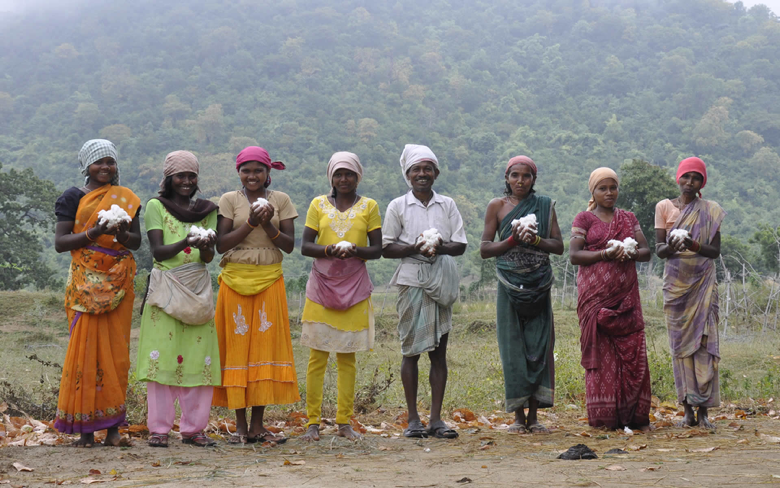Loomstate considers the full impact of materials and processes when we design a product - from the farm level to the finished garment. We report the annual environmental & social material impacts for each of our clients based on their respective production volumes. The numbers shown on the previous page and discussed below are some of the material impacts for the first NP Collection.
For this collection, we purchased 3,196.7 lbs of organic cotton, or just over 1.5 tons, from our farming collective partners. This purchase will support about 7 organic acres for a season. We say ‘organic acres’ since our farmers multicrop their land (for soil and biodiversity health) with organic food crops such as legumes, sunflowers and sorghum as well as cotton. This is one way that choosing organic garments helps support organic farming.

Most of our farmers are growing cotton in the central midlands regions of India, where monsoons are common. Cotton as a crop requires a very heavy water load to start growth, and then a dry spell afterwards helps defoliate to aid in harvesting. In many places this is done with irrigation and chemicals. Our farmers have been growing cotton in this region for thousands of years, and are deeply committed to organic agriculture. They use the monsoons to their advantage, avoiding the need to use ground water for irrigation. This is why we can say that compared to conventional cotton, our water savings are 743,349.74 gallons for this collection - which is about 1.5 gallons a minute, every minute, for a year.
No synthetic pesticides are used at any point of our process. By using only natural methods for cultivation, our total pesticide savings for this collection compared to conventional cotton is 7,250 lbs, or about 20lbs of pesticides every day for a year. Imagine all of that synthetic pesticide going into the ground and making its way to the water that we collectively share; you can see why organic methods matter.
Material Impacts are based on the substance that the material is composed of, in this case organic cotton, and are approximate. Calculations are done using a combination of the Textile Exchange Uptake Calculator, Organic Cotton Market Report 2017, Loomstate product data, and other sources. Please contact Loomstate with any specific questions regarding methodology.

